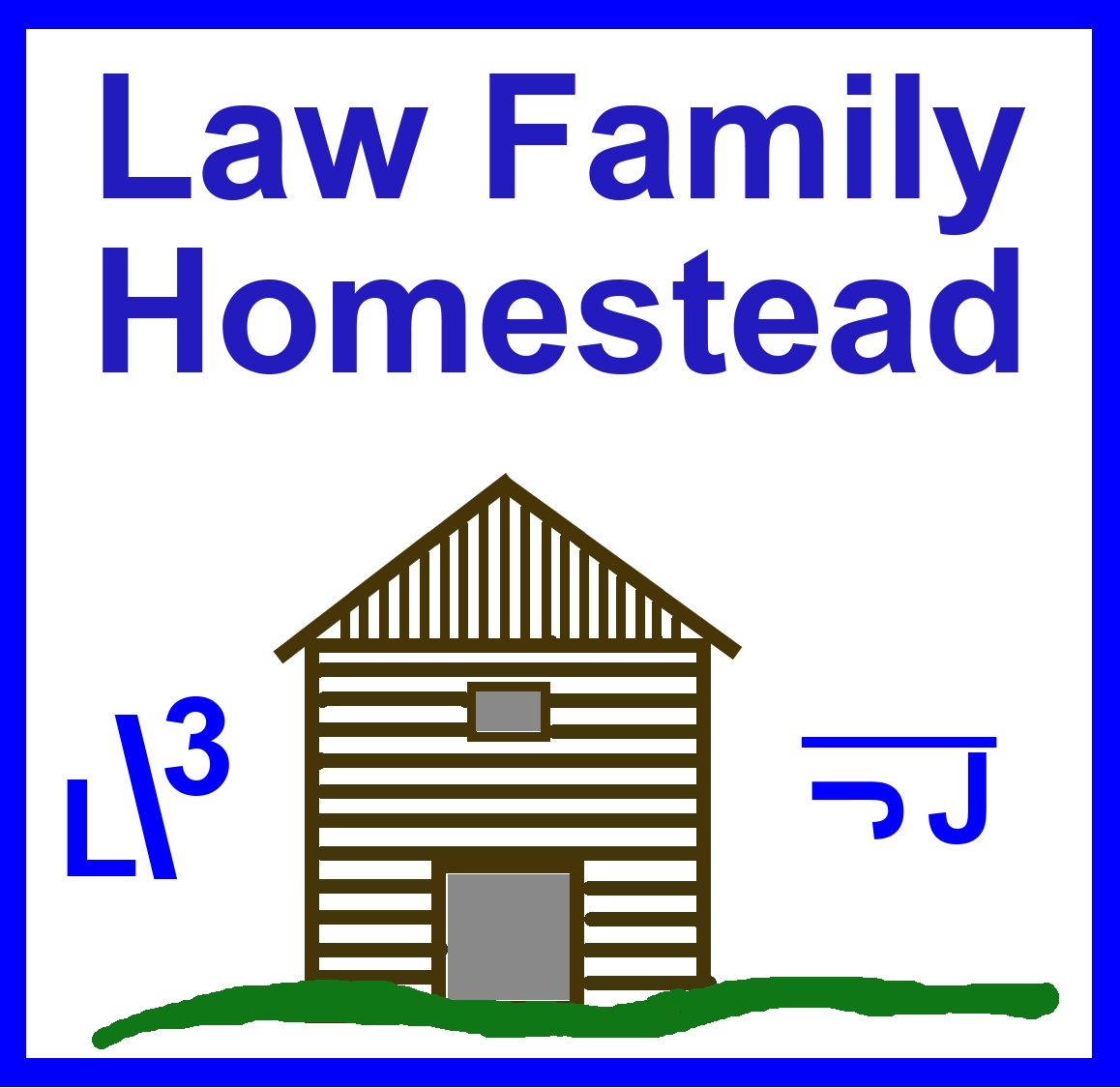If you've been following along with us over the past year, you have seen the progression of the hand-hewn dairy barn we constructed with help from extended family and friends. If not, it's well worth the effort to browse through our Archive Page for the Hand-Hewn Dairy Barn blog posts to see the barn's progression, beginning in earnest, the summer of 2018. We poured a sloped concrete floor, erected hewn log walls, and put the roof on before the rains began. We built stanchions inside the barn by the end of December and started milking on a real concrete floor with ample space for all the cows and us too! Sooo nice!
Kit planned on being home this spring until VAR was born, and for a month afterward while we settled into a routine with the new addition to our family.
Since we are storing all our hay for the dairy cows in our new barn, we really needed to get a hayloft door built so we could stack the top portion of the hayloft. Kit dedicated a couple days to making fancy barn door hinges he forged in his blacksmith shop. Meanwhile his dad cut out and built the loft door which he and Uncle Peter framed in the previous summer.
The hinges were just under four feet long, 3½ inches wide and tapered to 1½ inches wide. That's a lot of steel to move around by yourself. CW and a few of the other boys, at various times, were asked to step in and assist.
The first piece Kit constructed was the part of the hinge mounted by lag bolts to the barn doorway. A leftover piece of ¼-inch x 3½-inch flat iron and 3/8-inch rod were used for the entire project. The 3½-inch width was slightly narrow for what was needed to make the door-frame-mounted hinge plate. Both edges were scarfed and drawn out to an 1/8-inch thickness creating enough material for the hinge plate to fit and function correctly.
Here Kit is beginning to bend the end of the door-mounted hinge for the pin to fit into . . .
Almost all the way around the pin.
We did some looking around at historical hinges used on old barns and came up with a little information. I will share some of Eric Sloan's thoughts from his book "An Age of Barns".
"Generally speaking, hinges were never a clue to the age of a barn because doors took the hardest beating and over the years had to be replaced so often. For example, none of the original wooden barn-door hinges or leather granary-door hinges are known to remain."
A little help at the right moment from CW as the rod is driven through the hot metal insuring a correct fit.
Door hinge end complete.
Here it's all put together. The top end of the hinge pin was bumped into itself while hot creating a larger diameter thereby eliminating downward movement of the pin. Kit then punched carriage bolt holes to bolt it to the door.
Decorative cuts and turned metal bent outward around the anvil horn.
Kit tapered the middle section of the hinge and drew it out to a 2¾-inch width. With the round anvil horn and round side of a 2-pound hammer he drove the hot metal outward which he later dressed and shaped to final size on the top face of the anvil.
Kit temporarily folded the end section back on itself which allowed for the second set of decorative, turned-out, metal to be cut and heated.
The last section tapered further to an inch and a half.
Next, he forged the end into a decorative point.
You can see variations of this type of point in Eric Sloan's book "An Age of Barns". Here's another quote from it: "Strap hinges were nailed to the barn doors and the wrought-iron nails were clinched or made "dead" (permanently fastened). In the same manner, all battened door nails were hammered down on their pointed sides. It is possible that the phrase "as dead as a door nail" derived from the custom of clinching nails, although this is only my own idea and no one else has ever offered this explanation."
"Many farmers made their own hinges in the farm forge, sometimes from wagon tires. Their designs were often copied from a favorite seen in another area, which accounts for a hinge of English design being found on a German barn, and so on. The Dutch were fairly consistent in their design, most often using the flattened disk. Since there were very few foundries in America, most of the earliest houses had hardware imported from overseas."
Here the hinge is finished and ready for paint.
Next came the trick of hanging the door, 20-some feet in the air, without falling out the opening or dropping the door.
But the finished product was worth the risk, so the guys say.
Quoting the book again: "Pintles were sometimes notched to keep them from coming loose from the door frame; some had a "rattail" appendage that was nailed fast to the side of the timer."
I think we will try a "rattail" on the next hinge we make, they look really cool.
I must say it does accent the barn nicely; rustic, custom-made hinges, on a rustic, custom, hand-hewn log barn.
Stay tuned, as we have finished staining the barn. I will have pictures up shortly. Hint: it looks awesome!


















